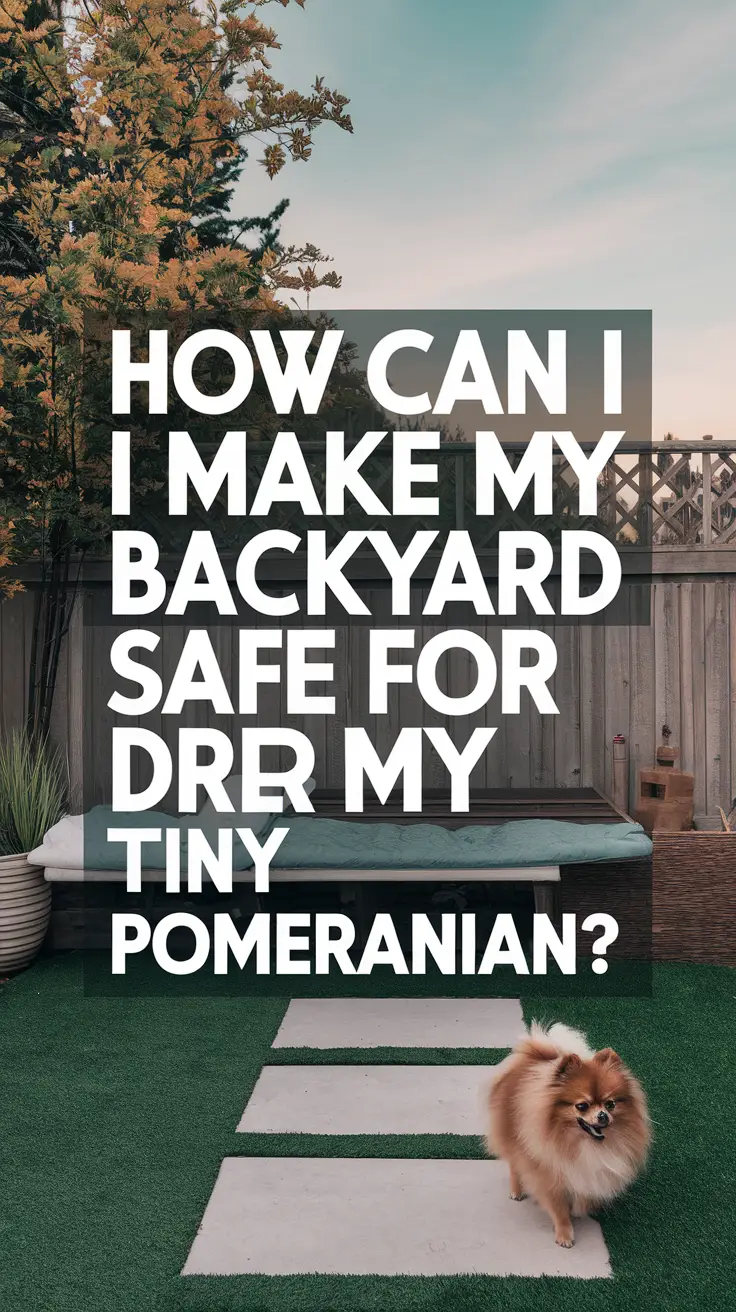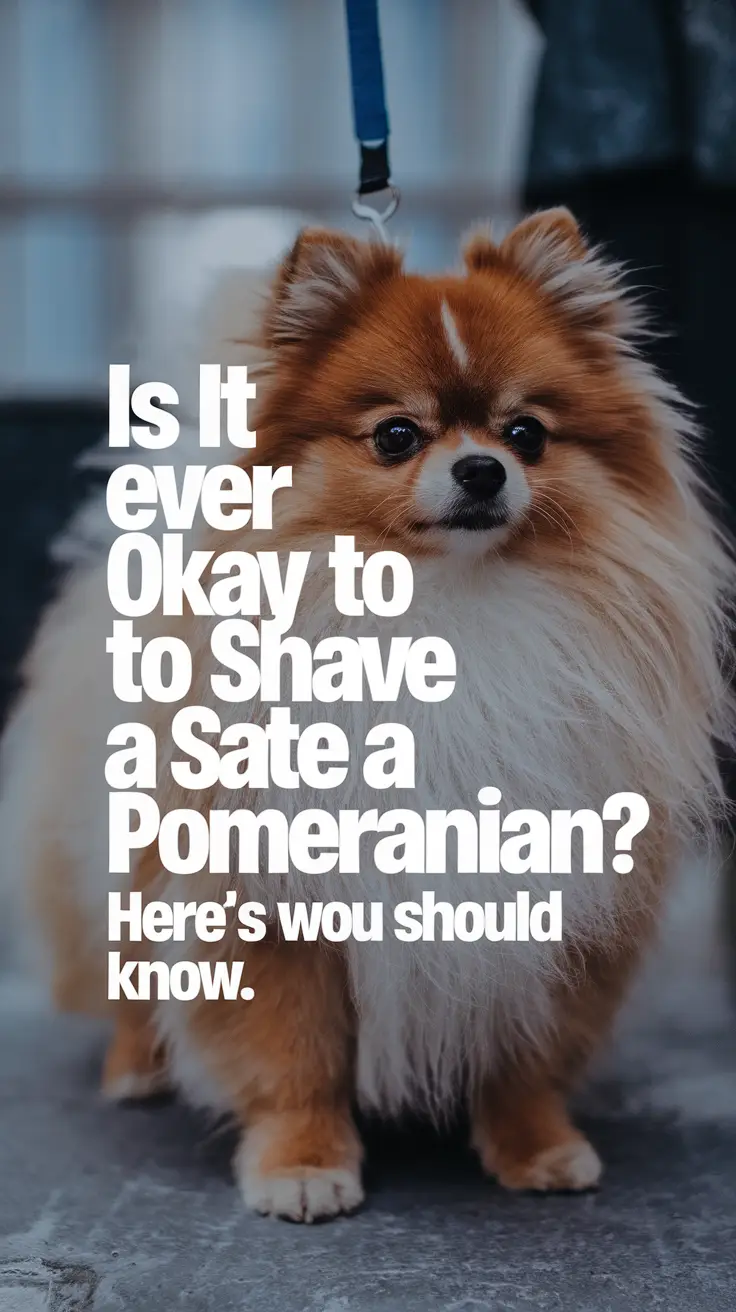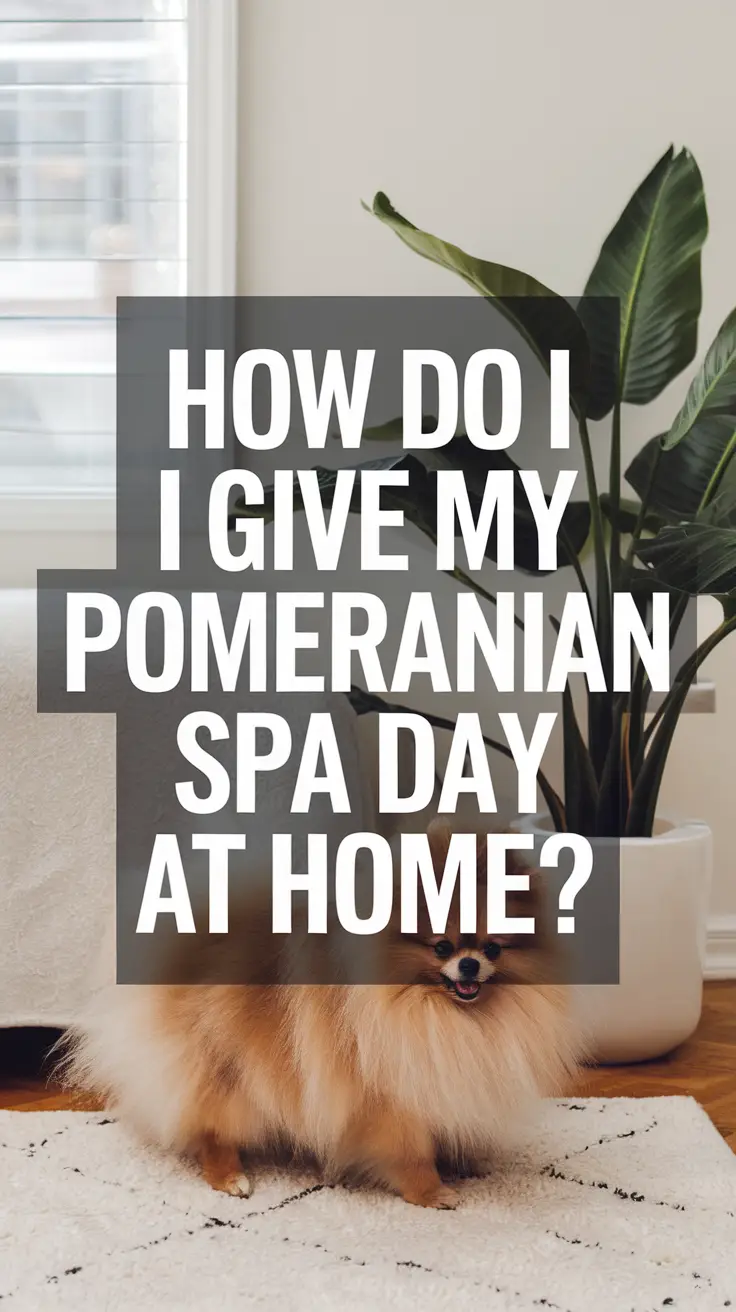Your tiny Pomeranian views your backyard as their personal kingdom, but what looks like paradise to you might hide dangers that could spell disaster for your four-pound furry monarch. After watching my Sash squeeze through what I thought was an impossibly small gap and end up in my neighbor’s prize rose bushes, I learned that creating a Pom-safe backyard requires thinking like a determined escape artist with a Napoleon complex.
Quick Safety Summary:
- Secure all fence gaps smaller than 4 inches and check for underground escape routes
- Remove or protect toxic plants, small objects, and chemical hazards at ground level
- Create predator-safe zones with proper shelter and supervision protocols
The Great Escape: Securing Your Perimeter
Pomeranians possess an uncanny ability to find fence gaps that defy physics. Sash once squeezed through a space I could barely fit my fist through, proving that these dogs are part Houdini. The American Kennel Club recommends a minimum fence height of 4 feet for small breeds, but height means nothing if your Pom can simply waltz through the gaps at ground level.
Essential Fence Security Checklist:
- Walk your fence line on hands and knees to spot Pom-sized gaps
- Install chicken wire or hardware cloth along the bottom 2 feet
- Check for gaps under gates – Pomeranians are notorious limbo champions
- Inspect weekly for new holes or loose boards
- Consider dig-guards if your Pom has excavation ambitions
My neighbor’s veterinarian, Dr. Martinez, shared a story about a Pomeranian who regularly escaped through a gap in a seemingly solid fence, only to be found three blocks away at the local bakery. The owner discovered their “solid” fence had a 3-inch gap hidden behind overgrown bushes.
Toxic Plant Elimination Mission
Pomeranians explore the world mouth-first, making plant toxicity a serious concern. After catching Sash nibbling on what turned out to be a toxic azalea, I became a backyard botanist overnight. The ASPCA’s extensive plant toxicity database became my new bedtime reading.
| Common Toxic Plants | Danger Level | Symptoms |
|---|---|---|
| Azaleas/Rhododendrons | High | Vomiting, diarrhea, weakness |
| Sago Palm | Extreme | Liver failure, seizures |
| Tulip/Daffodil Bulbs | High | Drooling, vomiting, diarrhea |
| Oleander | Extreme | Heart problems, tremors |
| Lily of the Valley | High | Heart rhythm issues |
Safe Plant Alternatives:
- Sunflowers – tall enough to stay out of Pom reach
- Snapdragons – colorful and completely safe
- Marigolds – natural pest deterrent bonus
- Pet grass – gives them something appropriate to munch
The Small Object Patrol
Anything smaller than a golf ball becomes a potential choking hazard for curious Pomeranians. Sash once tried to swallow a decorative river rock that was definitely too big for her tiny mouth, leading to an expensive emergency vet visit and a valuable lesson about ground-level hazards.
Conduct weekly “Pom patrols” at their eye level. Get down on all fours and scan for:
- Fallen fruit from trees (especially grapes, which are toxic)
- Mulch pieces small enough to swallow
- Garden tools left behind
- Decorative stones or pebbles
- Children’s toys that migrated from indoor play
Predator Protection Protocols
Hawks, owls, coyotes, and even large domestic cats view Pomeranians as potential prey. This sobering reality hit home when my neighbor’s security camera captured a hawk circling above Sash during her morning constitutional. Certified dog trainer Sarah Williams recommends never leaving toy breeds unsupervised outdoors, regardless of fence height.
Predator Deterrent Strategies:
- Install motion-activated lights and sprinklers
- Use reflective tape on fences to confuse aerial predators
- Create covered outdoor runs for unsupervised time
- Maintain clear sightlines – trim bushes where predators might hide
- Consider outdoor security cameras for monitoring
Weather and Temperature Considerations
Pomeranians are weather wimps, and I say this with complete affection. Sash starts shivering when the temperature drops below 60 degrees and pants dramatically in anything above 75. Their double coat provides some protection, but extreme temperatures pose serious risks.
Climate Control Essentials:
- Provide multiple shade sources that move with the sun
- Install misters for hot climates (test first – some Poms hate getting wet)
- Offer elevated resting spots to avoid ground heat
- Keep fresh water available in multiple locations
- Create windbreaks for cold weather protection
Chemical and Pest Control Safety
Traditional lawn chemicals and pest control methods often prove too harsh for tiny dogs who spend significant time close to ground level. After Sash developed mysterious paw irritation, I discovered my “pet-safe” fertilizer wasn’t as safe as advertised for dogs who lick their feet obsessively.
Pom-Safe Alternatives:
- Diatomaceous earth for natural pest control
- Corn gluten meal as pre-emergent weed control
- Beneficial nematodes for grub control
- Hand-weeding instead of chemical herbicides
- Organic fertilizers with longer cure times
Creating Positive Outdoor Experiences
A safe backyard should also be an enriching one. Pomeranians need mental stimulation and appropriate exercise opportunities. Sash’s favorite backyard feature is her personal agility course made from pool noodles and small hurdles – though at 6 inches tall, everything is relative.
Enrichment Ideas:
- Digging boxes filled with safe sand
- Puzzle feeders hidden around the yard
- Low tunnels for exploration
- Supervised interaction with sprinkler systems
- Scent trails using dog-safe essential oils
Creating a backyard sanctuary for your Pomeranian requires viewing your outdoor space through their tiny but mighty perspective. The investment in safety measures pays dividends in peace of mind and allows your little lion to rule their domain without risking life and limb. After all, a Pomeranian who feels secure in their territory is a Pomeranian who can focus on the truly important things – like barking at suspicious leaves and maintaining their reputation as the neighborhood’s most vigilant guardian.







